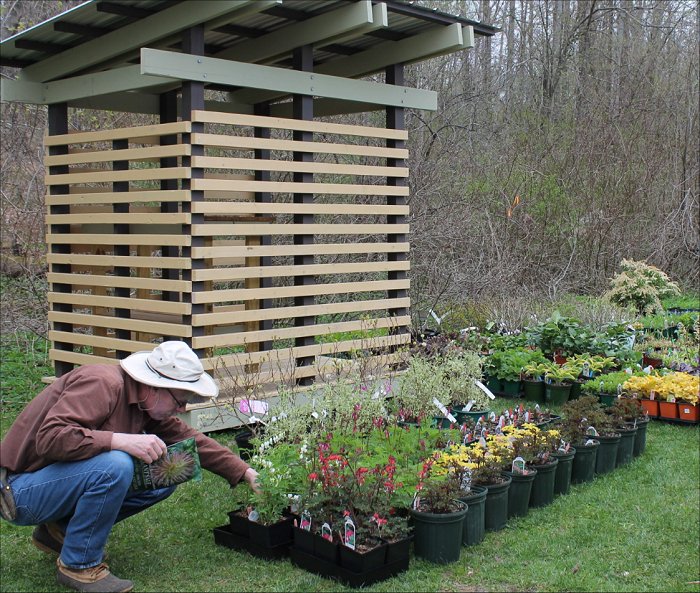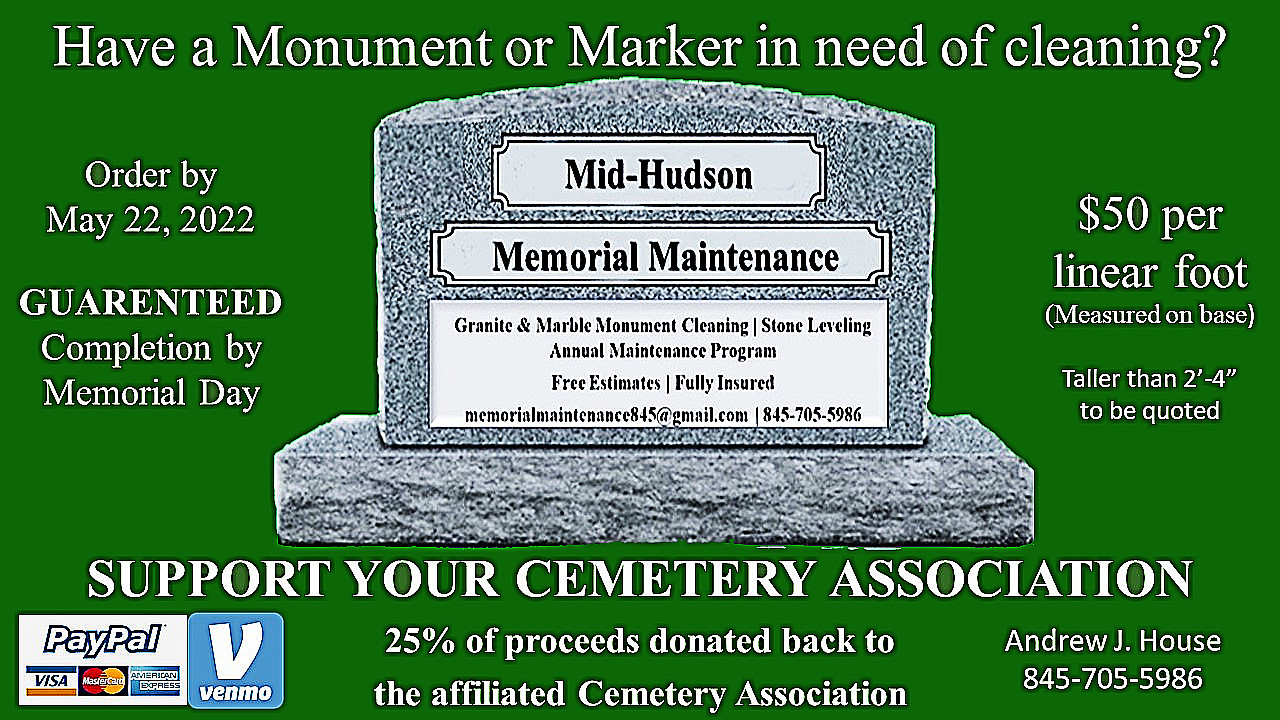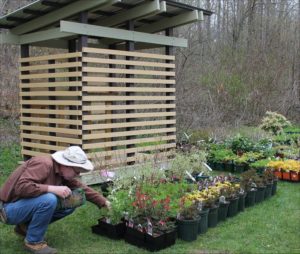Consider this Before Investing in Spring Plants
Berkshire Botanical Garden’s iconic plant sale: access your garden habitats before choosing what to purchase.
By Thomas Christopher
Too often as gardeners, we plant just to please our eye. That is, we find a flower with just the color we want and then insert it into an aesthetically pleasing spot in the landscape. When we make this our fundamental criterion for garden design, however, we violate an obvious rule, that garden plants must be healthy and vigorous to be attractive.
When, on the other hand, we also locate plants by their needs, setting them in a habitat where they will naturally find the degree of light and moisture and the kind of soil that they prefer, we not only set the stage for a healthier garden, we save ourselves work. There is no need for extra nurturing when Nature supplies what the plant needs. And when we make this a general rule, grouping our plants together according to the kind of habitat they prefer, we greatly simplify maintenance. If, for example, we fill a dry spot with plants that prefer dry conditions, then we eliminate the need to be constantly visiting with the hose, furnishing this much water to one plant and that much to another one, trying to turn the dry spot into a moist one.
This is not to say that aesthetic considerations aren’t important. There’s no need to settle for a planting that is healthy and vigorous but visually lackluster. The key, though, to first settle on a site-appropriate group of plants before you move on to making your aesthetic choices.
That, according to Dorthe Hviid, the Director of Horticulture at the Berkshire Botanical Garden, is increasingly what European gardeners are doing. They have been organizing their planting by the habitat types found in different areas of the landscape and then making their plant choices within those parameters. This trend, she adds, has begun to take hold in the United States as well. Which is why, when you come the Berkshire Botanical Garden’s Be-a-Better-Gardener Plant Sale on Mother’s Day weekend (May 11th-12th), you’ll find the offerings grouped largely by habitats. There will be plants for dry areas, for open, sunny areas, for the woodland edge, and woodland. There will be a division, too, for that artificial but ever popular habitat, the garden beds and borders, home to the garden fixtures such as delphiniums that do require extra care from the gardener in order to flourish.
This sale will be an educational experience as well as an opportunity to restock your garden. For if you come, you’ll find BBG staff members as well as seasoned gardeners who have been drafted to serve as “Ask Me” volunteers, all of whom can help you identify the habitats that exist in your garden and direct you to the appropriate divisions of plants, as well as answering your other gardening questions. Those who arrive already knowing just the plant they need will also find assortments of annual flowers (mostly grown at the Botanical Garden), tropicals, vines, and divisions of perennials dug from the BBG display gardens, as well as organic vegetable and herb plants and hanging baskets.
Open to members of the Botanical Garden only from 9-11 a.m. on Friday the 11th (members will also receive a 10 percent discount), the sale will be open to the public from 11-5 on Friday and from 9-5 on Saturday the 12th. All proceeds from the sale will go to support the Berkshire Botanical Garden’s horticulture and education programs.
So, take a minute in the next few days to assess your habitats. Then come to the Botanical Garden to get plants that will do well in addition to looking good.
Thomas Christopher is the co-author of “Garden Revolution” (Timber Press, 2016) and is a volunteer at Berkshire Botanical Garden. berkshirebotanical.org
Be-a-Better-Gardener is a community service of Berkshire Botanical Garden, one of the nation’s oldest botanical gardens in Stockbridge, MA. Its mission to provide knowledge of gardening and the environment through 25 display gardens and a diverse range of classes informs and inspires thousands of students and visitors on horticultural topics every year. Thomas Christopher is the co-author of Garden Revolution (Timber press, 2016) and is a volunteer at Berkshire Botanical Garden. berkshirebotanical.org.




